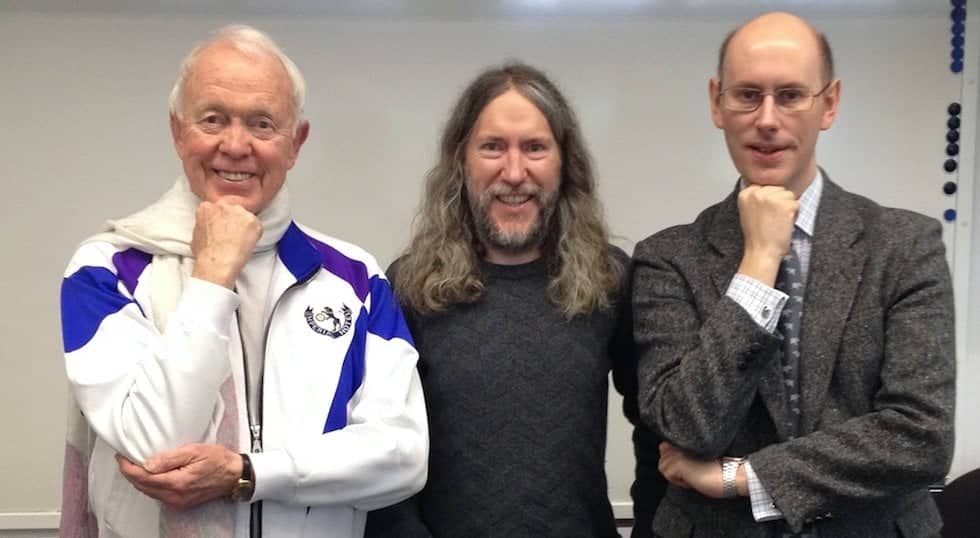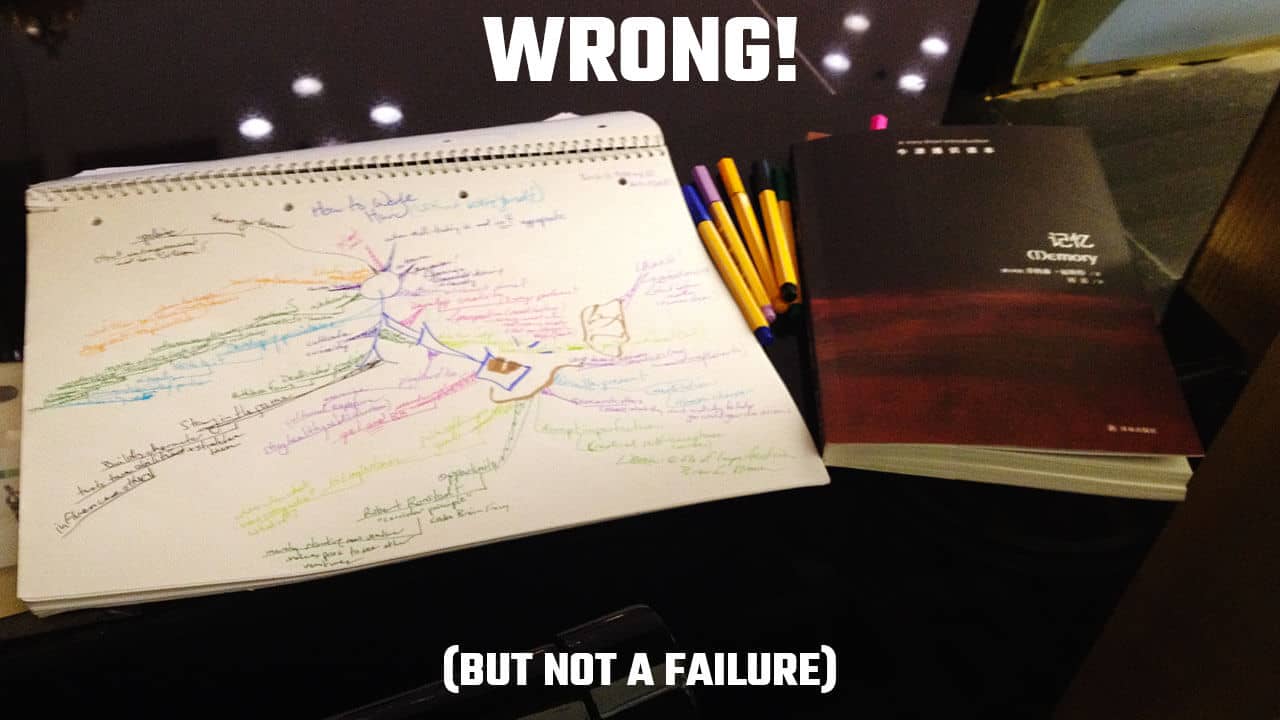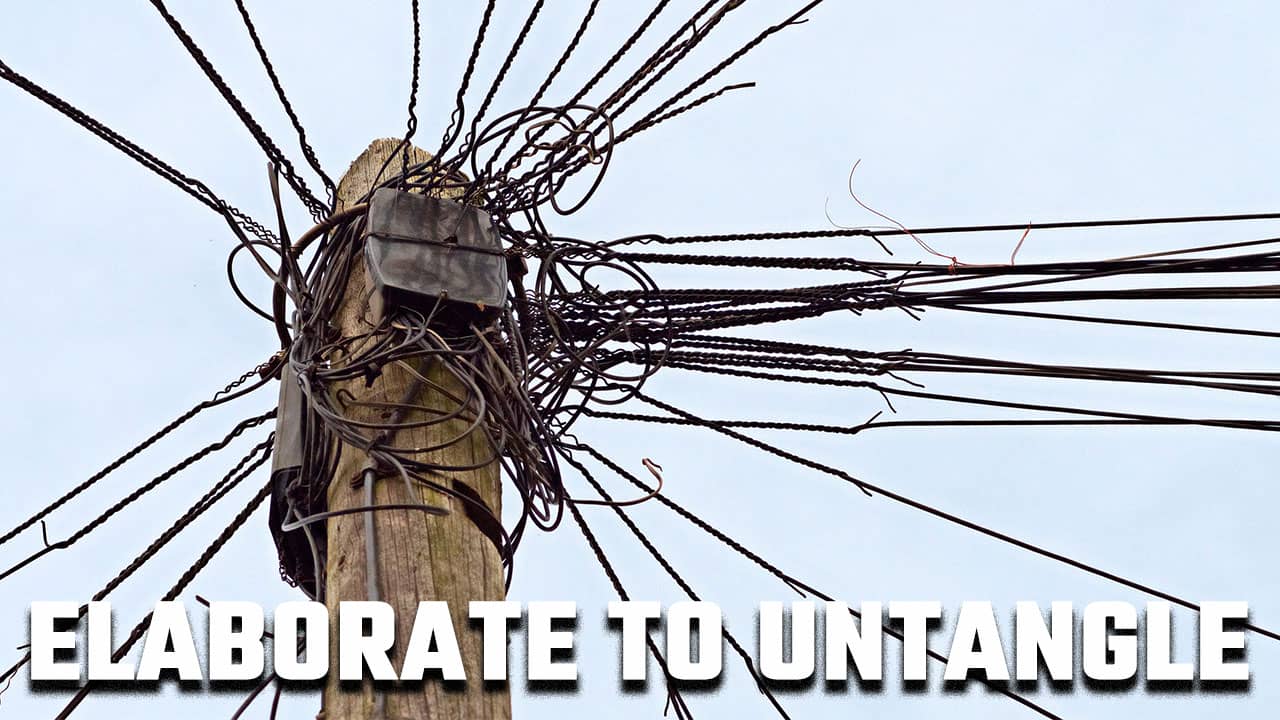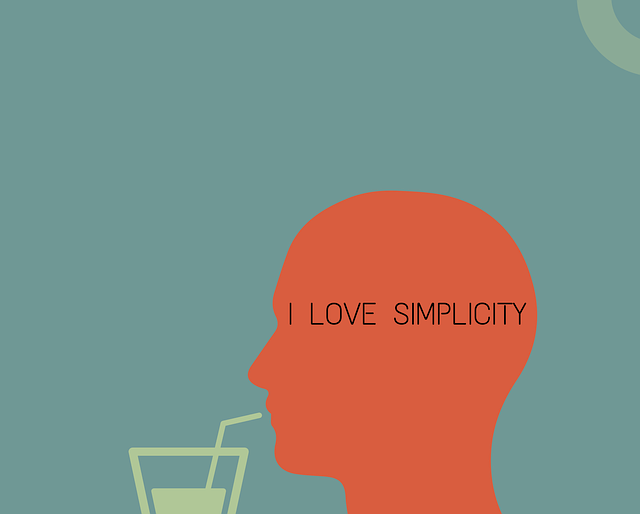Podcast: Download
Subscribe: Apple Podcasts | RSS
 Do accelerated learning techniques really speed up learning?
Do accelerated learning techniques really speed up learning?
Well, if you’re looking for ways to maximize your study sessions and get the most “bang for your buck,” here’s the real deal:
Most of the shortcuts people associate with “speed learning” and “speed reading” actually make things longer and harder.
That’s right:
Speed reading is not a shortcut!
(This is because most people can neither comprehend nor remember when they’re skimming like a maniac.)
But if you want a collection of techniques that will truly accelerate your learning process and help you master your discipline in a shorter amount of time, then it really does need to be just that:
A collection.
And to be clear:
Learning “faster” isn’t always about efficiency.
In fact, the fantasy of efficiency throws up one of the biggest barriers around. People waste time trying to master shortcuts that are never going to work.
Why?
Because they haven’t mastered the fundamentals that allow the learner to even understand the shortcuts, let alone effectively use them.
And that’s why we’re going to start this training by busting some of the myths around learning techniques that some self-proclaimed learning gurus (strangely) vilify:
- Highlighting
- Re-reading
- Keyword notes
We’ll cover when and why these 3 techniques can actually be great, and then explore 6 of the classic accelerated learning techniques everyone should know.
What Makes A Learning Technique “Accelerated”
I don’t know about you, but I’ve personally found highlighting and re-reading to be very helpful.
But there is definitely a right and a wrong way to perform these strategies.
In fact, they are deeply problematic if you don’t take into account what matters:
Context and strategy.
(Especially with respect to effective note taking techniques.)
Whenever evaluating a learning technique, ask yourself important questions like, “What context am I in?” and “Does this apply to what I’m learning?”
Take into account your desired outcome and the application of strategy in context.
Use A Mind Map And Vision Statement To Help
Literally map out what you want to achieve and see how relevant a learning strategy is to that goal. I suggest you use Tony Buzan’s Mind Map Mastery to help.
I also suggest you create a vision statement. Here’s how:
Then, analyze your results with the technique you implement into your study sessions. It literally requires some trial and error before you pass final judgment on what works in different contexts.
Finally, you must be willing to conduct experimentation to improve your results. Don’t be afraid of making mistakes while searching for what works best for you. There is no end all, be all when it comes to study techniques.
It doesn’t matter what others say. Highlighting can be useful in context, and I’ll explain why. Re-reading can be a great strategy for learning. Keyword notes can be extremely beneficial to achieve your desired outcome.
My advice? Don’t listen to the critics who dismiss these techniques so easily…instead let’s explore them a bit more in depth.
3 Bad Learning Techniques Made Good (In The Right Contexts)
- Sensible Highlighting
Highlighting can be useful for names, dates, key terms, and definitions.
Why is it a useful technique?
Certainly not because it helps you concentrate better while reading a text. After all, no matter how much you refine the approach, you’re still stopping and starting the reading process.
Nonetheless, the benefit of highlighting’s usefulness is rooted in delayed benefits.
For example, when you return to the text you can rapidly flip through the pages and say:
“That’s information I need.”
You don’t get the results immediately, but in context, the benefits can be powerful.
Used in a sparse and targeted manner, highlighting is a great alternative to having to search for specific kinds of information.
What kinds of information? When I was in university, I used highlighting for creating “beacons” that helped me rapidly gather:
- Names of people
- Dates
- Key terms and definitions
I identified them on the first read, and then circled back to pick them up for memorization later.
Color Coded Highlights?
Should you experiment with color coding your highlighting?
If it helps you rapidly distinguish names from dates, why not? I’ve personally never found pausing to change colors worth the time, but you might.
For me, I limit this technique to specific “seek and find” tasks. Highlighting in just one color – sparingly – is the best strategy when I don’t mind marking up my books.
Alternatives to Highlighting
There are alternatives to highlighting as well. These are tidier and a bit easier on the eyes than a sea of neon in your text.
For example, try something I’ve coined the Marginalia Dot, a simple dot in the margins.
You can also use squares, circles, stars, or some other shape. These are much easier to scan and I find they work a lot better than brackets or underlining in a text. Their non-intrusive nature preserve the aesthetic value and readability of the book too.
Even better, this technique introduces an element of memory exercise. Instead of “feeding” yourself the information you wanted to remember, the Marginalia Dot prompts you to remember.
The book’s content helps remind you, of course, but you’re not taking the simple way out. You’re forcing yourself to grow.
What do I do after laying out all these tiny dots? I use this textbook memorization technique with index cards.
In all cases, develop your own system so you can discover what works best for you. Only you can, so dive in!
- Re-Reading
I’m no stranger to re-reading a text, as you know.
Personally, I feel that re-reading is always a good idea after pre-reading and priming as well as after reading a book, and even after note gathering and memorization.
Now, I know that one of the reasons why re-reading is frowned upon is not because of the effectiveness of the technique itself.
It’s user error.
People have just not thought to budget and schedule the time for re-reading. The key is to set aside the time, instead of blaming time for being what it is.
- Keyword Notes
While the precise definition of “keyword notes” varies from person to person, it generally just means boiling bigger ideas down into individual words that help us unlock the larger concept.
For example, on this mind map, I boiled down an entire concept related to practice down to just that keyword, even though multiple ideas were involved.
Not madness like this early mind map I created (though this approach was not entirely for nothing):
A problem that many learners face is that they just don’t know what keywords they should use to unlock the larger concepts.
The best way to gain clarity? Ask.
Ask your professor, ask other students, or even the department secretary. Ask for copies of previous exams, or explore related texts by using indexes, bibliographies and online search tools suggested by librarians.
You must become a bit of a self-directed detective. Learn to ask the “right” questions by just getting started with asking them.
Also, here’s a next-level mindset tip: Let go of the idea that you could ever know everything there is to know. We are all constantly learning. We are lifetime learners, constantly searching out “keywords.” Accept this fact and enjoy the ride.
What Makes The “Good Accelerated Learning Techniques” Coming Up So Good?…
If highlighting, re-reading, and keyword notes are bad, what makes an accelerated learning technique good?
The same things that make the bad, bad! (Mind-blowing, I know.)
Remember, it’s not so much about the techniques, as it is the strategic deployment of the right technique in the right context.
When it comes to the classic accelerated learning techniques, let’s explore more of the details that will help you choose based on the learning situations you find yourself in.
- Self-Explanation
There are many ways to practice self-explanation, such as the Feynman technique:
Another method is to perform regular progress checks. Here’s how:
Record and analyze your progress. You don’t have to be hard on yourself if you don’t see a rapid improvement or something you believe is measurable, but really invest the time to explore where you are at with your learning journey.
For related tips like these, please see:
How to Create An UNSHAKABLE Memory Palace Training Routine
Take Practice Tests
Whether they be in textbooks, online, or are previous tests from your department of study, there are practice tests widely available for you to utilize if you seek them out.
Once you take the time to find “where you’re at,” and know what needs improvement in your knowledge base, fill in the gaps with some “brute force learning.”
Although this accelerated learning term sounds like cramming, it isn’t.
Instead, putting on a timer and gobbling up as much related information as you can helps foster better understanding. It’s a powerful alternative to saying “I don’t understand.”
Instead, you tell yourself “I’m going to understand this. This is not something that I get right now, but I’m going to write out what it is I don’t get, and then I’m going to craft a plan that helps me seal the gaps.”
In this way, you are taking charge of your education through self-explanation and a little tough love. So the next time you get hung up on something, journal the nature of the problem and then write out the most likely way to solve it.
Like this:
“I don’t understand this concept about nuclear fission. My book defines it as ______________. What I don’t understand specifically is _____________. To help myself understand, I’m going to search the key terms on Wikipedia, YouTube and try to find a few blog posts from experts on Google.”
Isn’t a small bit of time spent in self-explanation better than giving up?
- Elaboration
Elaboration is a mental process where you repeatedly ask yourself the classic questions of “Who, what, where, when, why, and how?”
Instead of just reading a text, this approach allows you to dig into it contextually. It’s essentially a means of manually injecting curiosity into your learning process.
For example, when dealing with mathematical formulas (for example) you can ask:
- Who came up with this?
- What were they doing with it?
- When did they come up with it?
- Where were they when they came up with it?
- Why did they come up with it?
- How exactly did they come up with it?
Really engage in the mental process of doing more than reading, but exploring, through questioning, the context.
Historical context can be very important!
The more you look at historical contexts, the more you’re able to compound a variety of levels of information. This act is itself a memory aid because you create more mental connections while doing it.
You’ll also want to use tools of comparison and contrast. Compare things historically, geographically, and geo-historically.
The possibilities are infinite. Use the power of combining multiple levels with these simple questions to your advantage.
The Power Of Consequences
Finally, take into consideration consequences of things which are always important to know.
For example, you can ask: “For those who understand the consequences of this knowledge, what happens for them as a result?”
Albeit conceptual, this is yet another layer of information that can deeply bolster your understanding and instantly make things more memorable.
At the end of the day it all comes down to getting granular with the text and diving deeper than a surface level of engagement so common amongst those who read passively.
- Proper Goal Setting
You must have a purpose and a why to what you’re doing. Too many times young people are pushed into making major life decisions at a very early age. Even if these people do become successful, they often wind up wearing golden handcuffs.
What exactly are golden handcuffs?
Golden handcuffs chain your life when you’re successful in completing goals, but you wind up miserable because you’ve led yourself into a career that is very different from what you wanted to do.
For example, how many highly successful doctors or lawyers had childhood dreams of becoming artists or musicians? What about the corporate executive who really wanted to be an author when he or she grew up?
At surface level they have it all figured out and should be happy. But we all know how it goes. In reality, so many people who seem successful are actually unfulfilled. And sometimes, accelerated learning techniques helped lead them into the maze that traps them.
How can this be avoided?
Easy: Proper goal setting.
Set goals that:
- You can actually accomplish
- You actually want the outcome of,
- Help you grow
- Give you options beyond the outcome so that you’re able to go in different directions after you’ve accomplished a certain level of goal.
Many people set goals that require smaller goals on the way to a larger goal, like stepping stones.
The smaller goals build up larger and larger until the ultimate goal is accomplished, one leading to the next.
Understand that even the smallest goal has to start somewhere. This should be based upon your existing competence. Proper goal setting takes into account an already established knowledge base, no matter how small.
Proper goal setting also is conscious of the Challenge-Frustration curve. You may find yourself bored as things get easier, as your goals are achieved, and, admittedly, that is a tortuous thing.
Experiment and find the balance of giving yourself sufficient challenge, but not so much that you are constantly frustrated and become burnt out.
Finally, take into consideration the 80/20 rule when goal setting.
- Remove or Manage Distractions
Easier said than done right?
After all, distractions can be internal or external. Oddly enough, it’s the internal distractions that are bigger, meaner, and nastier than anything from the outside world.
Internal Distractions
Internal distractions are largely mental. The stories we tell ourselves, and the way we convince ourselves we’re not good enough, smart enough, or capable is grossly unfair.
Although such rotten mental content has no place in an intelligent mind, nonetheless, it’s there.
More crazy:
We reason and justify negativity so that we believe it’s logical and our truth. It’s a constant inner battle.
In my experience, meditation and taking care of diet and sleep are the best cure.
External Distractions
Distractions can also be external.
Take into consideration your learning environment. Is it too crowded? Too noisy? How is the lighting? Find out if a steady hum of people and bright lights is beneficial to your or a distraction.
Also, do you work better in a more dimly lit space with silence? Experiment with your study space to find what works best for you. Take steps to remove or reduce those environmental distractions to multiply your efforts.
- Multi-Sensory Learning
We’ve talked in great detail about the Big Five of Learning – reading, writing, listening, and speaking and their benefits to memorization and learning. By creating a multi-sensory experience, far more physical and mental connections are made.
When you use multi-sensory learning across multiple disciplines, the material becomes more naturally etched in your mind.
In addition to the Big Five explore the idea of distributed practice. Experiment with studying in short sessions, learning broken up into smaller bursts, over a long period of time.
Learn Faster By Changing Spots
Finally, try changing contexts or locations. The novelty of a new learning environment may be exactly what you need for retention.
Once you’ve found your ideal learning environment explore places with the same aesthetic.
Rotate between several cafes or area libraries. If you find yourself hitting a wall at a location, move to the next. You can even take the opportunity to walk between the places as a Memory Palace journey. Here’s how:
Yes, taking a break to walk between locations really can help you learn faster. It’s great for writing too (most of the articles on this blog were written while walking between cafes, as it happens.)

- Coaches and Mentors
Coaches and mentors are huge for accelerating your learning.
If you don’t have one, you should figure out how to get one.
Not only do you have the actual expertise of the person who’s gotten where you want to get, but they can see what you’re doing with a granular level of detail that someone who is not at that place that you want to get can never see.
We know there are benefits to a study group and discussion among peers, but a coach or a mentor is next level engagement. They can pick up the details of what you’re doing wrong, and what you’re doing right and give you advice, from personal experience, on how to improve.
If your discipline is so niche or you are unable, for any reason, to find a mentor, consider Tim Ferriss’s idea of DiSSS.
D stands for deconstructing.
Look at top level experts or performers in your field. Analyze what they are doing right, or what works for them. What techniques have led to their success? What strategies have they utilized to excel at their craft?
Find and use the great ideas, but also use your critical thinking skills. What failures and setbacks have they had along their journey? Knowing their weaknesses and making note of their failures and missteps can help you to avoid those same mistakes.
(I has no representation. It is simply a placeholder vowel so the acronym can be spoken, therefore easily remembered.)
S is selection from similarity.
Selection involves meta learning or knowing how to learn. For example, if you have a goal of learning multiple languages, start with the second language where you started with the first.
If you are learning vocabulary and you began with household objects for your first language – bed, table, door, chair, etc., – begin with this same vocabulary for the next language. Craft a modus operandi.
S stands for study. You have to put in the work. There’s no shortcut there. Studying is focused time and effort.
The final S represents stakes. Simply put, we’re talking about having skin in the game. Invest in yourself. Make sure you have the best possible training that you can get. If coaching and mentorship is an option for you (and even if it isn’t), make it happen.
Is Simplicity Actually Worth It?
There’s a trend out there these days that involves learning gurus urging people to seek out simplicity. After all, we naturally shy away from complication, and the sharks know how confirmation bias works. They’re singing exactly the tune most people want to hear.
Instead, I suggest that you ask yourself this difficult question:
“Should I simplify or look complexity in the eye?”
If you really want to experience accelerated learning, I challenge you to avoid the easy route. Stop simplifying things for simplification’s sake.
Learning doesn’t need to be simple, and the best science we have shows beyond a doubt that learning must be challenging in order for growth to take place.
Instead of simplifying information, make it manageable. Not easy, but manageable. In other words, deconstruct the steps involved, just as Tim Ferriss suggests.
Above all, remember to keep flexible. You may need to rework your plans, examine your goals for practicality’s sake, or raise the stakes. For many people, they’re goals actually aren’t lofty enough.
And just get started!
Once in motion, you’ll soon see that everything that once seemed tough looks very different on the other side.
I’m talking about the side of acceleration that you’ll be proud of.
Why?
Because it is real, earned and entirely your own through authentic experience.
Related Posts
- How to Memorize Something Fast: 5 Simple Memory Techniques
Wondering how to memorize something fast? Read now for 7 solid steps you can follow…
- Mnemonic Devices: Top 10 Tools For Boosting Your Memory Fast
What are mnemonic devices, and how can you use them to remember? This post shows…
- The 3 Best Speed Reading Books That Actually Work
If you're looking for the best speed reading books, these 3 gems should not be…












6 Responses
Another great podcast, Anthony!
“I would not give a fig for the simplicity this side of complexity, but I would give my life for the simplicity on the other side of complexity.”
– Oliver Wendell Holmes Jr.
Thanks so much for checking it out and letting me know you liked this one, Andrew.
Great quote too. That is exactly the sentiment I was trying to get at. We should live our lives like most people won’t so we get to experience those things that most people can’t – and then do everything in our power to help them change.
I found this article really reassuring. I do nearly all the things that you mention here Anthony – even though I really don’t get the memory palaces methodology – it appears quite beyond me because I just don’t see what it adds. (I get the images bit but don’t get the putting it in a particular place and as for numbering everything or putting it into alphabetical order …..) But what you’ve set out here – great stuff! I get it!
Particularly interesting in the context of the last couple of months was the one about looking for similarities. I’ve always done that (even before I realised I did it). It proved a brilliant technique for me recently when I spent nearly 2 months in Italy. I don’t (didn’t) speak any Italian but do speak French and did do Latin at school and have been learning Portuguese for a few months over the European winter. Well, I found that by looking for the similarities and adding an o or an a on the end of a word, I could understand/communicate in Italian!
There are lots of really great lessons in this article – congrats.
Thanks for this, Rosemary.
I’m concerned that you don’t “see” what the Memory Palace technique adds.
It’s not really something “seen,” but something experienced. One issue I find is that people try to understand it instead of doing it.
That said, some people can use associations to memorize at scale without a “spatial/alphabetical canvas” on which to paint there Magnetic Imagery. If that’s you, fantastic, and you would likely still benefit from the Magnetic Imagery principles, such as the Magnetic Modes and Bridging Figures, albeit in different ways.
One book that might help you understand the vast profundity of using the alphabet is Memory Craft by Lynne Kelly. My interview with her should be coming out next week. I don’t use it the way she does, but going through it from another angle might inspire you to dive into it more.
Or if it’s a matter of not doing because of a lack of understanding, the key is to do it without the understanding and allow the results to speak for themselves.
Believe me, if understanding was a need I had, I wouldn’t be celebrating 7 years of this blog at the moment. It’s precisely because I gain understanding by doing and continuing to learn about these techniques using the learning strategies outlined on this page that I’m still blogging about memory. Understanding (in this realm) is the product of action and we memorize first according to the ancient principles so that we might peer into the mysterious wealth of knowledge they contain later… and then some.
Here’s a line I memorized recently that might bring this principle into focus, also from an ancient text:
“Just as chopping wood is the indirect cause and fire the direct cause of cooking, spiritual practice is the indirect cause and self-knowledge the direct cause of liberation.”
That’s from Atma Bodha by Adi Sankaracharya.
Re-phrased for memory:
“Knowledge of the techniques comes from practicing them, and knowledge gained from practice guides and intensifies practice. Thus, putting in the practice is not the direct path to understanding and using memory techniques well. It is the only path.”
Hi Anthony Metivier! I do not like to write in my books.
It comforts me to know that brilliant minds accelerate learning and complete their goals but are not happy even that because their lives or choices.
If I can make one step further each day and do something in the directions of my dreams, at least I am going the way I want.
Thanks for this, Maricela.
There is certainly no need to write in your books if you’d rather not. I’ve just found the Marginalia Dot to be powerful for those books I wanted to read quickly and then extract certain kinds of information from later, without finding a mess in my wake.